Prep: 35 mins
Cook: 20 mins
Soaking: 4 hrs
Total: 4 hrs 55 mins
Servings: 4 servings
Yield: 8 1/2 cups
One of the most wonderful things about Chinese home cooking is the variety and thriftiness of it all. Bits and pieces of leftovers, odds and ends, particularly of vegetables, are tossed together in happy chaos, creating that exciting sensation of chasing after the perfect bite—that ideal proportion of your favorite ingredients in one single mouthful.
Chow mei fun is one of those dishes, and economical, versatile, and endlessly adaptive to boot. It’s different from household to household. This vegetarian spin takes the base flavors of that not-actually-Singaporean yet globally recognizable, curry-laden Singapore Chow Mei Fun and makes it vegetable forward in a lively and fresh version.
An excess of Napa cabbage allows you to use fewer noodles than other versions. And it’s easy to go meatless when charred broccoli and Chinese black mushrooms add earthy depth; vibrant blistered red bell peppers mimic the burst of color usually lent by char siu; and extra fluffy eggs provide protein. Just be sure you don’t skip the broccoli and the dried mushrooms.
“I loved making Mei Fun at home. I used Chinese black mushrooms, which I like for their color and texture. I served the dish with soy sauce, sesame oil, and thinly sliced green onions. Delicious!” —Diana Andrews

A Note From Our Recipe Tester
Ingredients
-
2/3 cup dried Chinese black mushrooms or dried shiitake mushrooms
-
8 ounces vermicelli rice noodles (also called mai fun, mei fun, or thin rice sticks)
-
1 pound Napa cabbage
-
1 small red bell pepper
-
1 medium red onion
-
2 medium carrots
-
4 cups broccoli florets
-
2 tablespoons curry powder
-
1/2 teaspoon kosher salt
-
1/4 teaspoon ground white pepper
-
1/8 teaspoon MSG, optional
-
2 tablespoons neutral cooking oil, divided
-
3 large eggs
-
2 tablespoons fish sauce, more to taste
-
1/2 cup Shaoxing cooking wine
Steps to Make It
Prepare the Dry Ingredients
-
Gather the ingredients.

-
Place the dried mushrooms in a large bowl. Add enough warm water to cover. Let soak to rehydrate. This may take several hours, so prepare this well in advance.
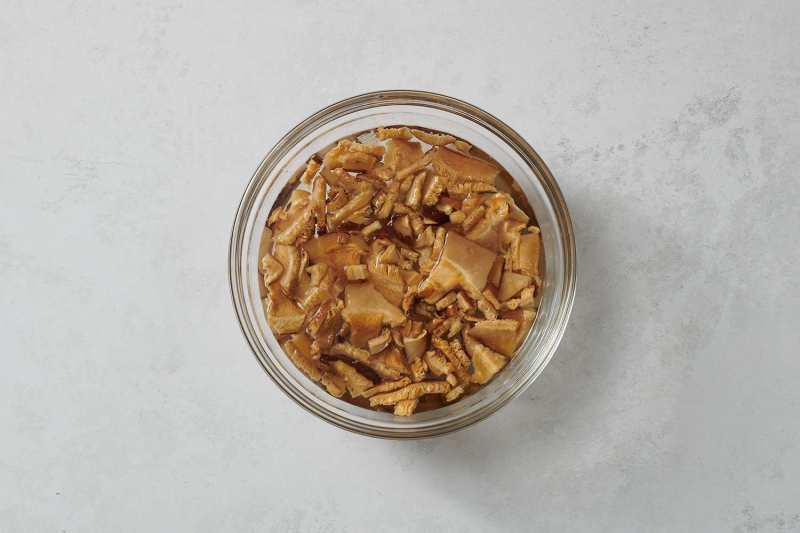
-
Place the noodles in a large, deep bowl and cover with hot tap water. Let soak until tender, about 30 minutes. If the noodles are not tender after 30 minutes, continue to soak 5 minutes longer. Meanwhile, prepare the other ingredients and begin cooking.

-
Keeping each vegetable separate, cut the cabbage into thin crosswise ribbons. Cut the bell pepper and red onion into thin slices. Peel and julienne the carrots. Halve any thick broccoli florets.
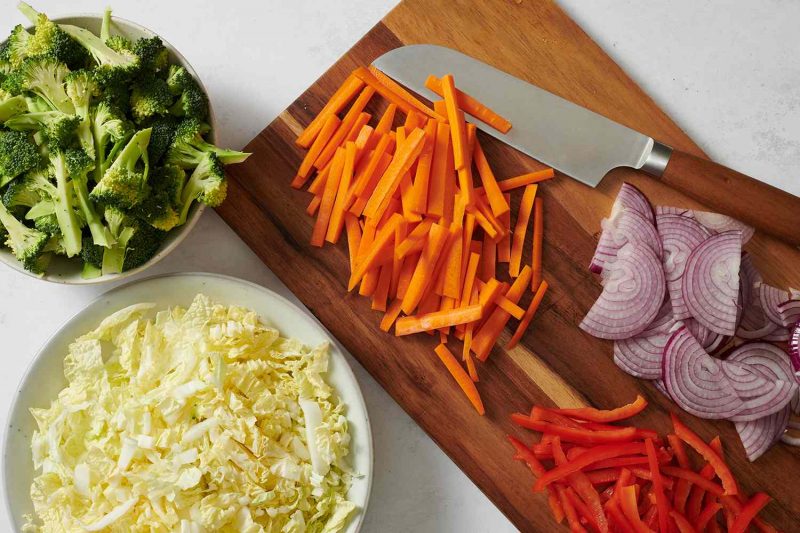
-
Remove the mushrooms from their soaking liquid, and cut them into thin slices. Reserve the liquid for later use.
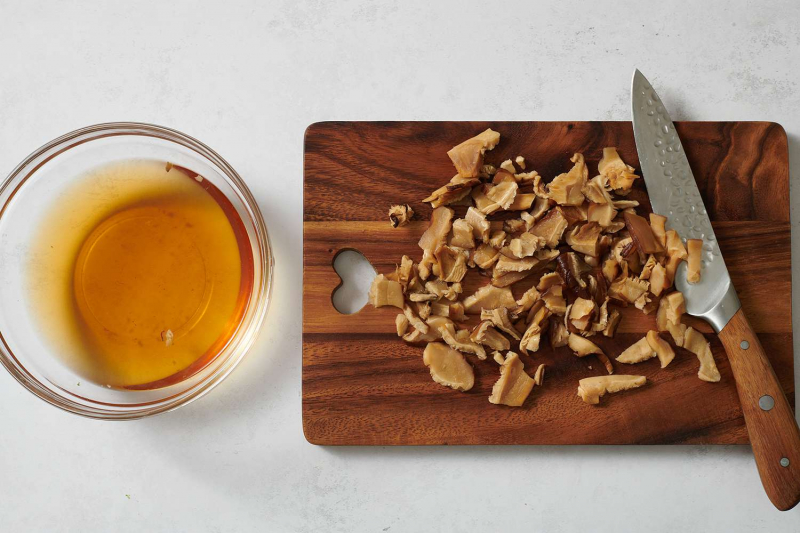
-
Combine the curry powder, salt, white pepper, and MSG, if using, in a small bowl. Set aside.

-
Drain the noodles and set aside.
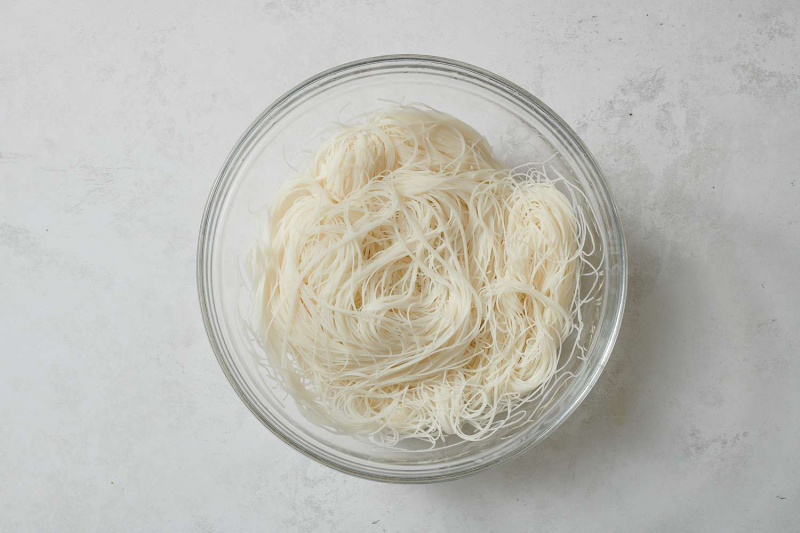
-
Heat a large wok over medium heat. Add 1 tablespoon of oil, and wait for it to shimmer, swirling it to coat the wok.
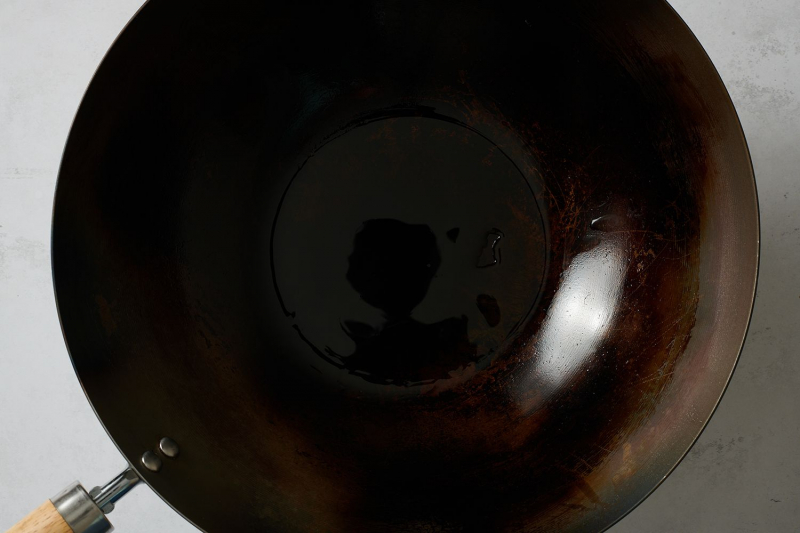
-
Add the eggs, stirring lightly to scramble, breaking them up into small curds until cooked through. Transfer the eggs to a plate and set aside.
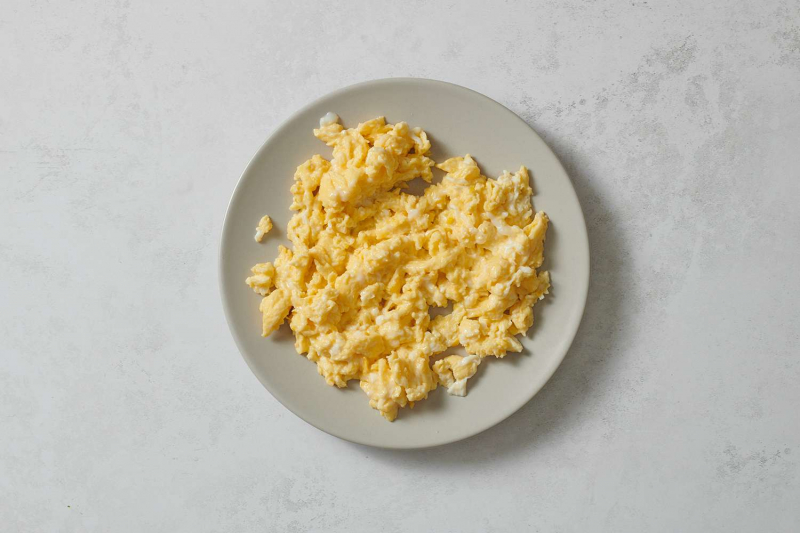
-
Increase the heat to medium-high. Add the remaining 1 tablespoon of oil down the side of the wok. Swirl it to coat the wok. Add the red bell pepper and broccoli, stir-frying in the wok.
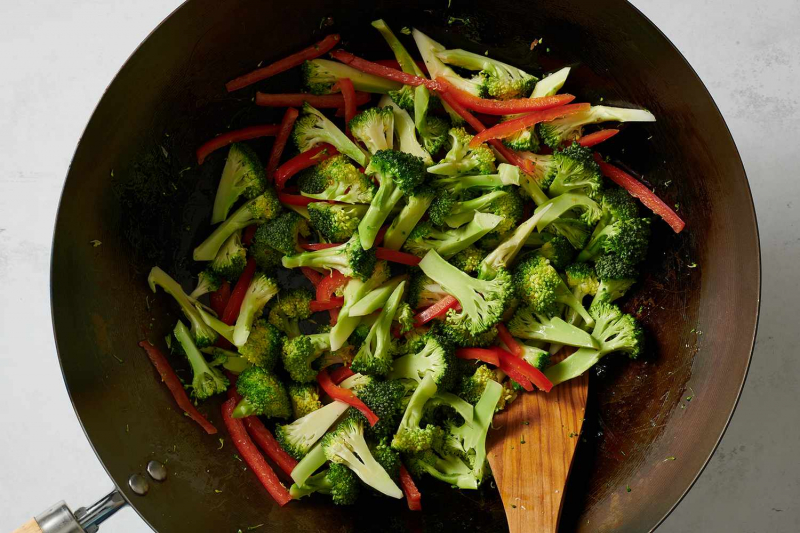
-
Once the broccoli brightens, add the carrots and onion. Continue to stir-fry until the vegetables are crisp-tender, about 2 minutes.
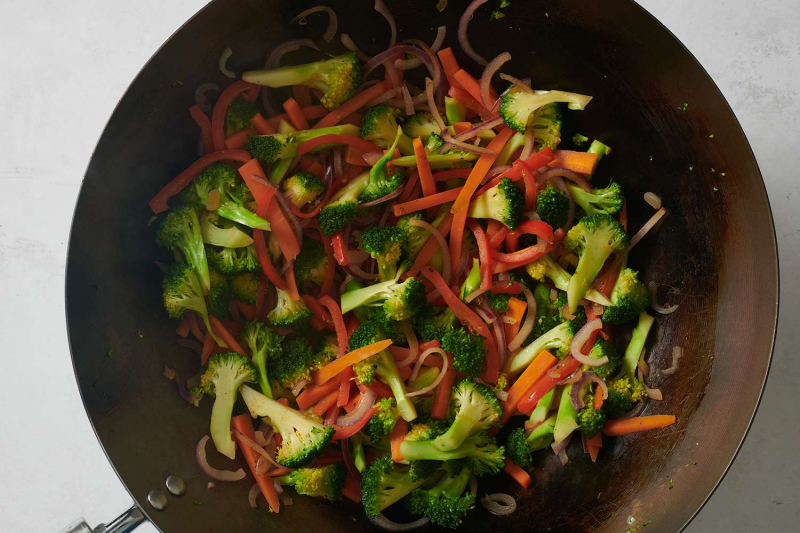
-
Increase the heat to high and add the mushrooms. Stir-fry, pushing the vegetables up the sides of the wok and pressing them into the pan, then shake the wok. Continue stir-frying this way for about 2 minutes.
Create a well in the center of the wok. Add the cabbage, then fold the vegetables over it immediately to let their heat wilt the greens. Cook, undisturbed, for 1 minute, then press the vegetables into the wok's surface to lightly sear.
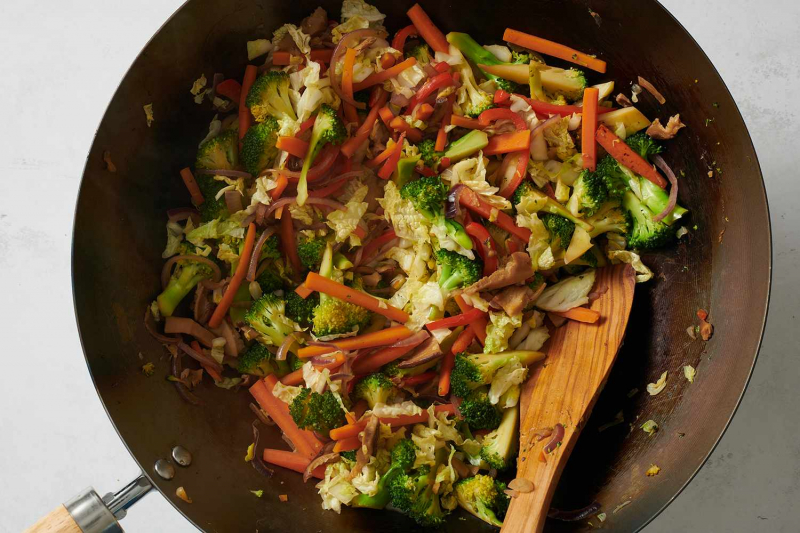
-
Make another well in the center of the wok. Add the noodles, curry powder-salt mixture, and fish sauce. Toss to coat.
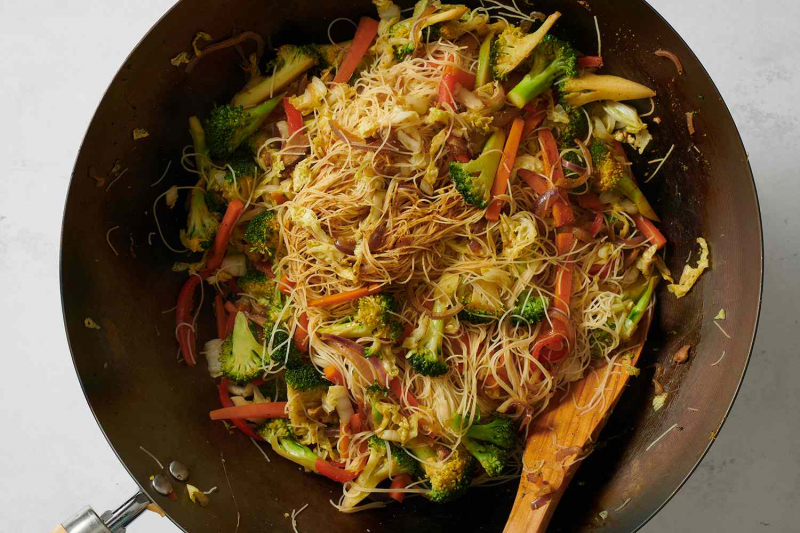
-
Reduce the heat to medium-high. Add the cooked eggs and stir-fry, making sure to toss the mixture from the bottom of the wok.
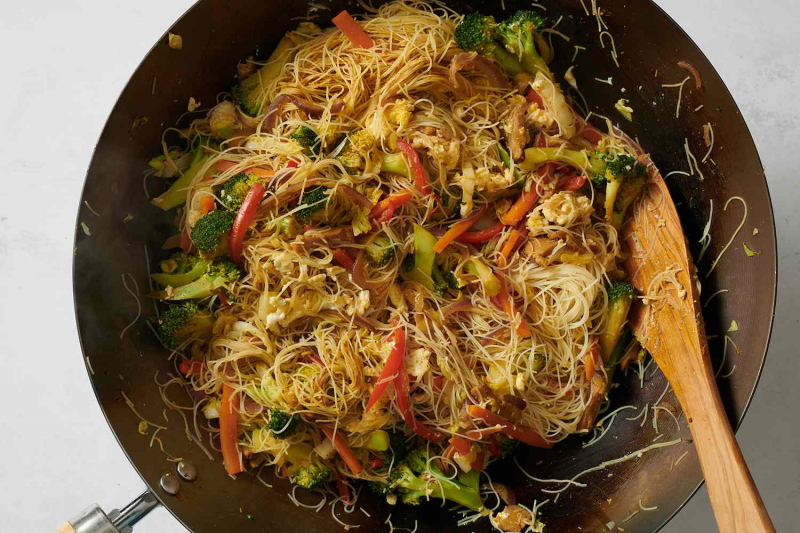
-
When the wok is dry, pour in the Shaoxing wine and 2 tablespoons of reserved mushroom liquid down the side of the wok. Continue to toss and scrape the mixture from the bottom of the wok. For a more toothsome dish, push the mixture into the wok's surface again to dry it out and create a light crispness in the noodles. Divide between bowls and serve immediately.
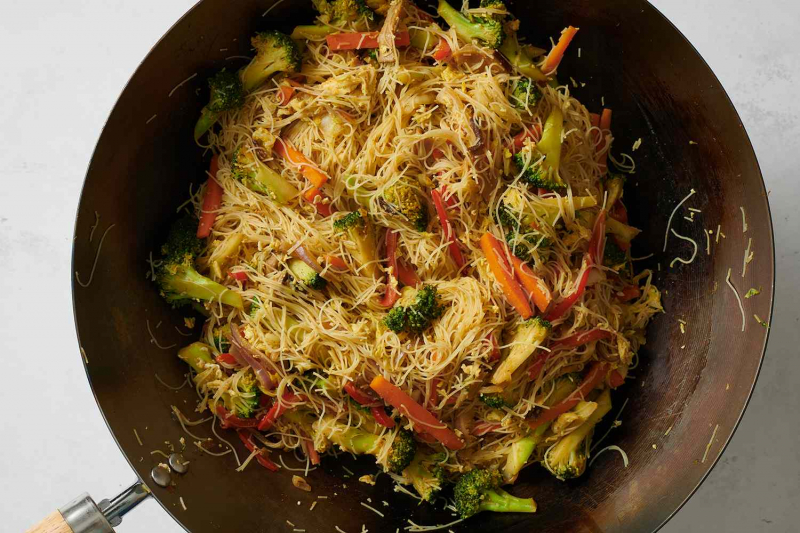
Recipe Tips
- When shopping for ingredients, make sure you pick up vermicelli rice noodles made strictly of rice and water–not rice noodles with tapioca flour, bean thread, glass, nor cellophane noodles. All of these varieties look very similar uncooked and can be easily confused!
- It might be tempting to substitute fresh shiitake mushrooms in this dish under the assumption that fresh is best. However, these will absolutely not taste as impactful as their dried versions, nor will they be as strong to the nose. The dried versions have a highly concentrated flavor and will create the mushroom water you can use to release any stuck-on noodles from the wok. Look for them in flat, vacuum-sealed packages at an Asian or international market, or loose in bulk bins at specialty ones. Look for shorter stems and wide, fleshy caps. Bear in mind, though, that the thicker the caps, the longer they’ll take to reconstitute thoroughly. The reward, though, are extra-juicy, meaty bites, and it’s worth the extra time.
- Finally, it’s highly recommended that you use a wok for this dish. If one is not available, you can use a deep, extra-wide saute pan or Dutch oven, but it’s not recommended. Too much direct heat across a broad surface makes the dish more likely to stick or burn; ingredients piling up risk getting steamed; and ingredients can easily fly out of too shallow of a pan. A good wok is an investment worth making, with far more utility than you’d think.
Recipe Variations
These ingredients aren’t typically in traditional Singapore Chow Mei Fun, but they were always in my dad’s version as we were growing up, and it’s ruined me for restaurant renditions since.
Add marinated tofu for more protein, or pre-cooked shrimp to make it pescatarian … or bring the recipe back to its roots with velveted chicken and pick up red lacquered roast pork from a Cantonese BBQ shop if you have access.
You can riff on the vegetables, too, adding celery, bean sprouts, snow peas, and other fillers, so long as you keep it moving and give it room to breathe in the pan.
How to Store
You can store cooked chow mei fun in a sealed, airtight, and shallow glass or plastic container in the refrigerator for up to 5 days. When you reheat it, make sure you fluff it first before you microwave it loosely covered with a damp paper towel.
You can also reheat it on a pan on the stove, sauteeing it on medium heat until hot throughout, or steaming it as my parents liked to do. However, the first method will dry it out and the second will add considerable moisture, softening your vegetables and noodles.
Make Ahead
You can prepare your noodles in advance by soaking them in warm water for about 2 hours. They won’t cook and will stay pleasantly toothsome in this suspended state. If you’re short on time, you can speed up the reconstitution process by boiling water, turning off the heat, then dropping the noodles into the pot. Do not attempt to cook them like pasta, as they will overcook and become mushy this way.
You can also cut up the vegetables up to a full day ahead of time. Make sure they’re dry and covered tightly in airtight containers, and refrigerated until ready for use. Additionally, the mushrooms can sit in their liquid for days at room temperature.
| Nutrition Facts | |
|---|---|
| Servings: 4 | |
| Amount per serving | |
| Calories | 575 |
| % Daily Value* | |
| Total Fat 13g | 16% |
| Saturated Fat 2g | 10% |
| Cholesterol 140mg | 47% |
| Sodium 1586mg | 69% |
| Total Carbohydrate 99g | 36% |
| Dietary Fiber 14g | 50% |
| Total Sugars 7g | |
| Protein 19g | |
| Vitamin C 158mg | 788% |
| Calcium 174mg | 13% |
| Iron 5mg | 26% |
| Potassium 1457mg | 31% |
| *The % Daily Value (DV) tells you how much a nutrient in a food serving contributes to a daily diet. 2,000 calories a day is used for general nutrition advice. | |